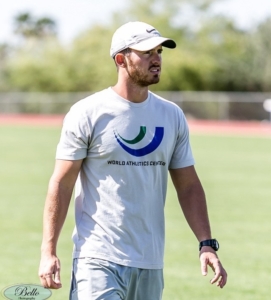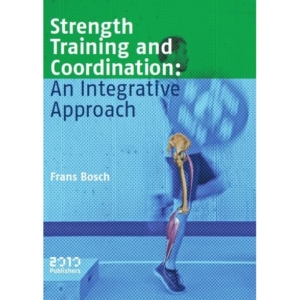Pacey Performance Podcast REVIEW- Episode 175 Jason Hettler
This blog is a review of the Pacey Performance Podcast Episode 175 – Jason Hettler
Jason Hettler
Website: www.simplifaster.com
Background:
Jason was born and raised in Michigan, and completed his degree in exercise science there. He then came out to what was at the time World Athletic Center for an internship, and was offered a position after that. They rebranded and changed the name to ALTIS (approximately August 2015).
Discussion topics:
Jason on ALTIS, it’s visibility on social media and the aims as a business.
”A big objective of ours is to professionalise amateur sport, with focus on track and field, reactionary in nature to the sport performance world. It’s all about being transparent and putting it out there and giving future generations a better idea of what high performance sport does or can look like. We are trying different avenues to reach the masses, including the foundation course, the 360 Library subscription based content, apprentice coach programme”
Jason on how you sort the signal from the noise in terms of what is the good, the bad and the ugly in terms of information on social media
”Try and find individuals who have some trends and some patterns of success, rather than one-offs. A big part of it as well is having a philosophy as a coach and a practitioner and understanding what it is that you stand for. A quote from Alexander Hamilton is, if you don’t have that philosophy then if you stand for nothing, you’ll fall for everything.”
Jason on periodisation and the philosophy at ALTIS
”We’re still trying to work through it all and see what really does periodisation means and where it fits. But for now we look at periodisation and how we operate at ALTIS through what we term a complex parallel lens. For us all that really means is that we have three major objectives on the track, and we have three major objectives in the weight room.”
Track:
- Acceleration
- Speed
- Speed Endurance
Weight Room:
- Dynamic Effort
- Max Effort
- Repetitive Effort
”If we look at acceleration development, we’re looking at shorter reps, anywhere from 10 metres up to possibly 40 metres. Our speed work builds off of that from 60 to 90 metres, and our speed endurance will come from typically 120 metres up to 250 metres. At least that’s with the short sprinters.
We’re going to take a gradual progression from the grass and flats onto the track with spikes, with blocks, solo runs, then running next to somebody, and slowly building from there. Then as far as the weight room, our Zone 1 (Dynamic effort) use long range of motion exercises such as a clean grip snatch, which allows a lot of time to generate velocity on the bar. Our max strength Zone 3 uses compound lifts at intensities of 85% and up, higher rest, three to five minutes, lower reps anywhere from 1-5 reps typically.
Then in the more work capacity type sessions it’s really limiting the rest, higher reps, 10-12 possibly, and then we’ll use a lot of unilateral work there just as an avenue to increase some time under tension. We are very particular and quite careful with the prescription on the work capacity (due to hypertrophy being contraindicated). That’s one of the zones that comes out pretty early in the year. For some individuals they may never even see that type of loading parameter but it really just comes down to an individual basis after that.”
Jason on the common threads that run through the programme at ALTIS not dependant on the individual
”For the athletes with high training age a lot of them have pretty high strength levels. At this level for them, the big difference maker typically is not going to be the development of maximum strength, whereas a youth athlete or somebody a little bit less developed will see a lot of increase in speed and in acceleration through training that ability.
Some of the females for instance may have a little bit more of that work capacity because they’re not going to put on size quite the same way that a lot of men do. So they may have a higher density of it and/or may carry it longer throughout the training year. For most of them we’ll take max strength through the competitive season and bring that down to once every 10 or so days, just enough of a stimulus for them to feel that tension and to feel strong.
In terms of supplementary work we’ll do a lot of posterior chain work, a lot of work for the hamstrings especially. That usually starts isometrically and/or eccentrically and then progressing into what we refer to as reflexive eccentric, which are really fast, light loads, really trying to get a quick eccentric contraction out of it and in some ways trying to replicate what they’re going to experience when they’re sprinting.
The other avenue for supplementary work is a lot of the Bosch type stuff that’s coming out and being quite popular. For us, we’re still figuring out exactly where it fits within our methodology and our philosophy, but for now, it almost serves as a bridge so to speak, between the warm up that we’ll do in the weight room and the main pieces of a session. There is a lot of context and stability around the high knee or A position, I think Bosh refers to as a hip lock position. For us it’s definitely clear that there’s benefit to it and that it fits somewhere, so I think the next step is how much, and where.”
Jason on the use of Velocity Based Training (VBT) at ALTIS
”We’ve played with it a little bit with our Dynamic Effort day. From the athlete’s perspective, all we want them thinking on those days is to move the bar as fast as they can, and ideally we’re going to see some progressing of overload and it’s going to get faster each time, but we realised that’s not always the case, especially when they’re coming off track and all the different factors and variables that come into play. They may not be feeling the same that they felt the last time they did the session. And so really our programming numbers and loads are based more off a Perceived Exertion of Intensity. In addition we don’t go off a percentage of 1RM.
Everything we do is supplementary to what we’re doing on the track, and so in a lot of ways we’re trying to safeguard and manage fatigue to allow the execution and the quality and the intensity that we like to see on the track to occur.”
Jason on his principles around acceleration
”Stuart McMillan really turned me on to this idea of projection, rhythm, and rise.
Projection– angular projection of shank relative to the ground during the initial impulse, as well as the hips projecting horizontally. Some people get caught p in the trap of this idea that a 45 degree angle is optimal for everybody. It’s really finding where an athlete fits based on their abilities and limb length.
A big myth I think around acceleration is the short choppy steps and possibly an issue with speed ladders, and speed ladders may have a time and space for some people, or for some objective, but in terms of accelerating and accelerating properly, I think the potential for some negative carryover for that, because we want longer strides, hip projecting forward.
Rhythm – If we think of a clap being ground contact, it’s going to start slow and slowly increase with each step, so as velocity increases we’re going to need to see a change in that ground contact and in that frequency.
Rise – as the velocity is increasing, we need to see a gradual rise of the centre of mass.
Jason on the differences in programming for speed between track and field athletes and team sports
Not a lot really in a lot of ways it follows a similar pattern and for a lot of that it’s when we introduce variability, and how we do that. At the start of the year, or the start if a training camp for team sports athletes, we’re not going to throw a lot of variability at them. They’ll already have a lot of variability, after taking two months off or six weeks at the end of the season, and not look the greatest, and lose some of the mechanics and some of the understanding.
As they begin to develop that understanding and lose some of that more innate or natural variability that they have in their movement, then we’ll start to pile some things on and so complexes of different drills, using different sprint drills in between the accelerations. One thing I have found a lot of success with just holding a dowel on your shoulders, taking the arms out of it, really seems to take projection quite well. It’s implemented more through the middle of the phase, whether it’s mid season, or it’s the middle couple of weeks of a six week training camp. That’s when we start to insert it and really begin to challenge the stability of those movement patterns and see how deep we can get that those attractor wells to build.
Towards the end of a training camp we want to pull that away so that they can really try to round things out and leave that camp with a better understanding, take out some of that noise and variability, and just execute properly with very specific technical feedback.
Author opinion:
ALTIS have a compelling mission to give future generations a better idea of what high performance does or can look like. If you are interested in ALTIS and specifically the training theory related to the weight room, I’d also encourage you to check out Stu MacMillan’s website and his ”Coaches’ Guide to Strength Development” blog series. It is clear that Stu (Head Coach at ALTIS) has a strong desire to simplify the complexity and with this blog series including guest posts from the likes of Matt Jordan and Derek Evely he really delivers on their mission to be transparent and put it all out there. It is one of the most comprehensive guides you’ll ever read on a leading organisation’s training principles and methodology.
Check it out at: www.mcmillanspeed.com
One thing that was interesting from listening back to the podcast, was that a the beginning of the chat Jason seemed unclear where the ”Bosch type stuff” fits and then at the end of the podcast he was quite clear that he would programme in ”variability” into the training block towards the mid phase of the training block. So it would be worth following up with Jason on how the Bosch type stuff has evolved in the training at ALTIS in the weight room. To me it seemed like he almost answered his own question by suggesting (at least for the track work) he would bring in more variability towards the middle of a training period (which could include Bosch type exercises)
Top 5 Take Away Points:
- Have a Mission– ALTIS mission is to professionalise amateur sport and give future generations a better idea of what high performance sport does or can look like
- Have a Philosophy– ALTIS have three major objectives on the track (Acceleration, Speed and Speed Endurance) and three in the weights room (Max Effort, Dynamic Effort and Repetition Effort)
- Understand Importance of Maximum Strength– for an athlete with a high training age the big difference maker typically is not going to be the development of maximum strength
- Understand Importance of S&C– Everything we do is [only ever] supplementary to what we’re doing on the track
- Understand Key Technical aspects of Acceleration– Projection, Rhythm and Rise
Want more info on the stuff we have spoken about? Be sure to visit:
www.altis.world
www.simplifaster.com
You may also like from PPP:
Episode 372 Jeremy Sheppard & Dana Agar Newman
Episode 217, 51 Derek Evely
Episode 207, 3 Mike Young
Episode 192 Sprint Masterclass
Episode 87 Dan Pfaff
Episode 55 Jonas Dodoo
Episode 15 Carl Valle
Hope you have found this article useful.
Remember:
- If you’re not subscribed yet, click here to get free email updates, so we can stay in touch.
- Share this post using the buttons on the top and bottom of the post. As one of this blog’s first readers, I’m not just hoping you’ll tell your friends about it. I’m counting on it.
- Leave a comment, telling me where you’re struggling and how I can help
Since you’re here…
…we have a small favor to ask. APA aim to bring you compelling content from the world of sports science and coaching. We are devoted to making athletes fitter, faster and stronger so they can excel in sport. Please take a moment to share the articles on social media, engage the authors with questions and comments below, and link to articles when appropriate if you have a blog or participate on forums of related topics. — APA TEAM










The best ceramic straightening irons always come with an adjustable heat setting to give a safe and controlled treatment in spite of flowing hair type.
Before buying any ceramic curling irons, we need to make certain that we
have ample knowledge about it because occasionally, the distributor out there
might guide us wrongly about hair styling items and thereby, we
have to be careful from such sellers. Nothing matters greater positivve first
impression; that is certainly why the Herstyler Flat Iron will always top the
lists of your woman’s beauty tools.
Feel free to visit my web site: Flat Irons